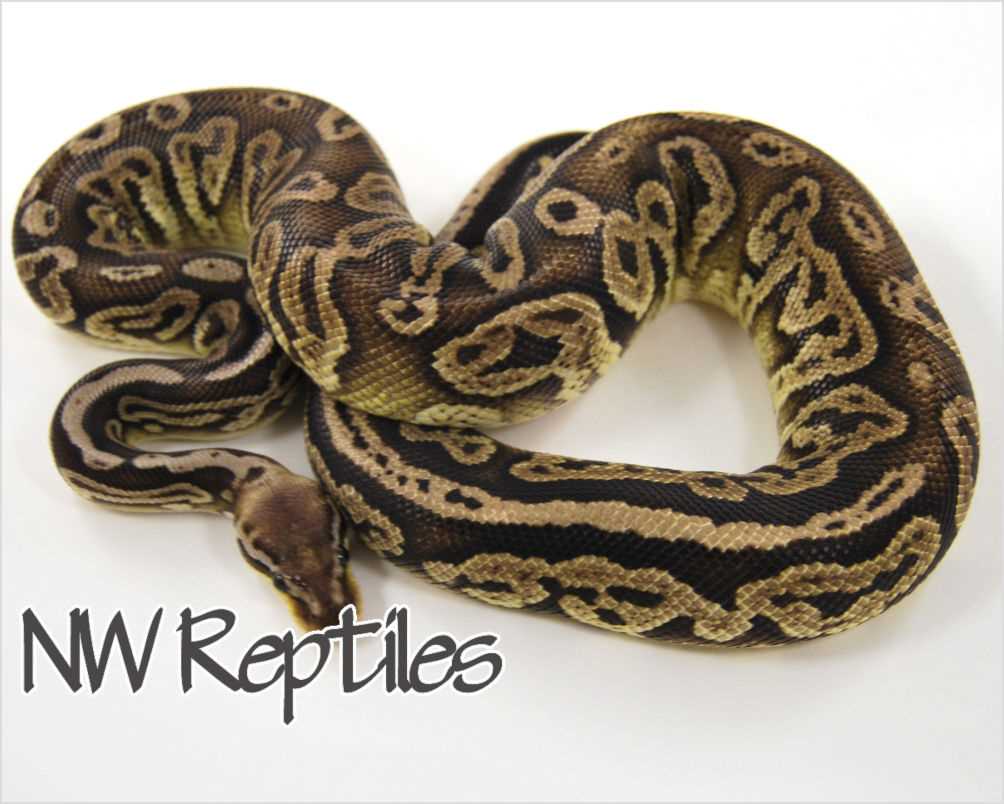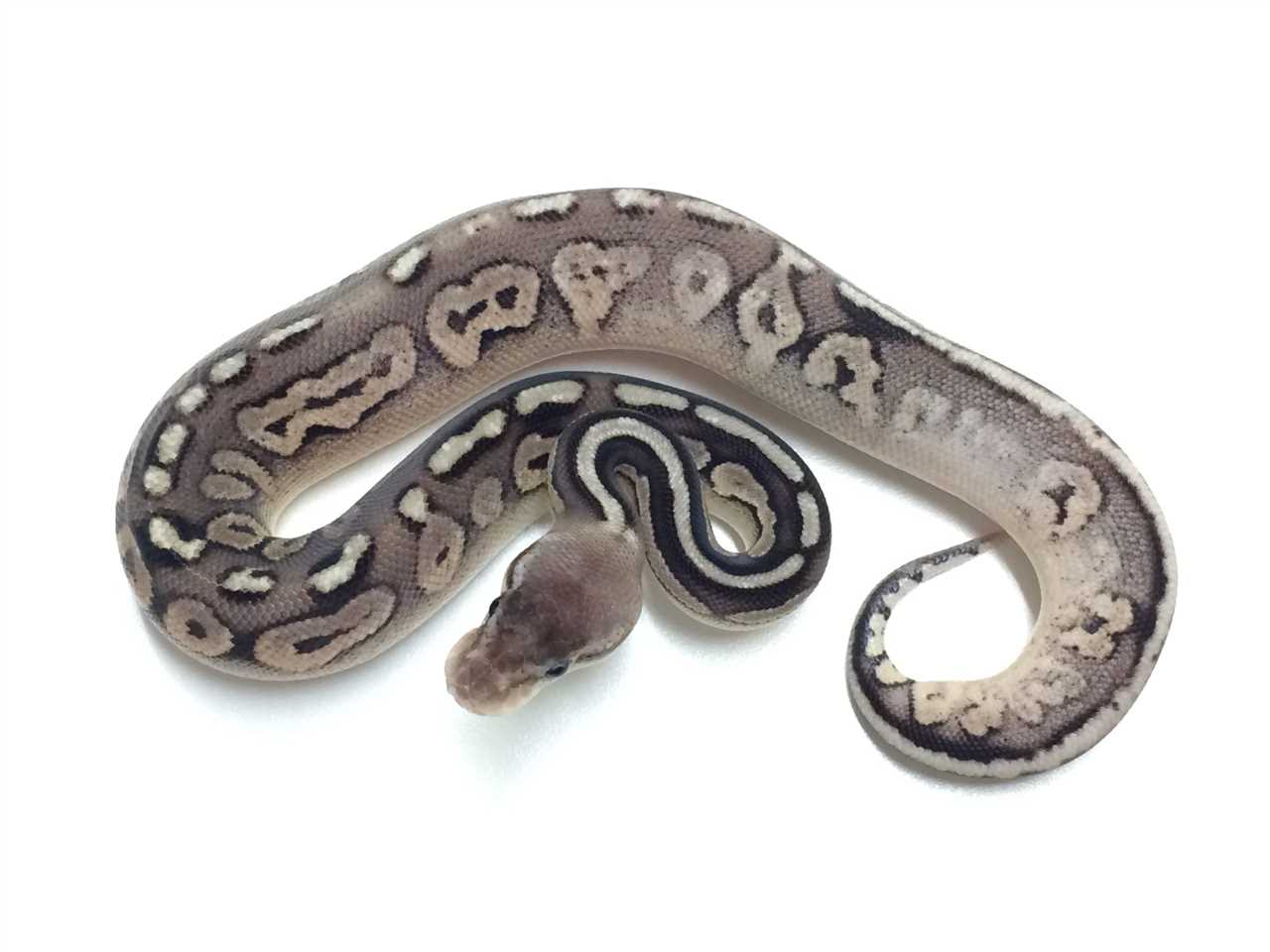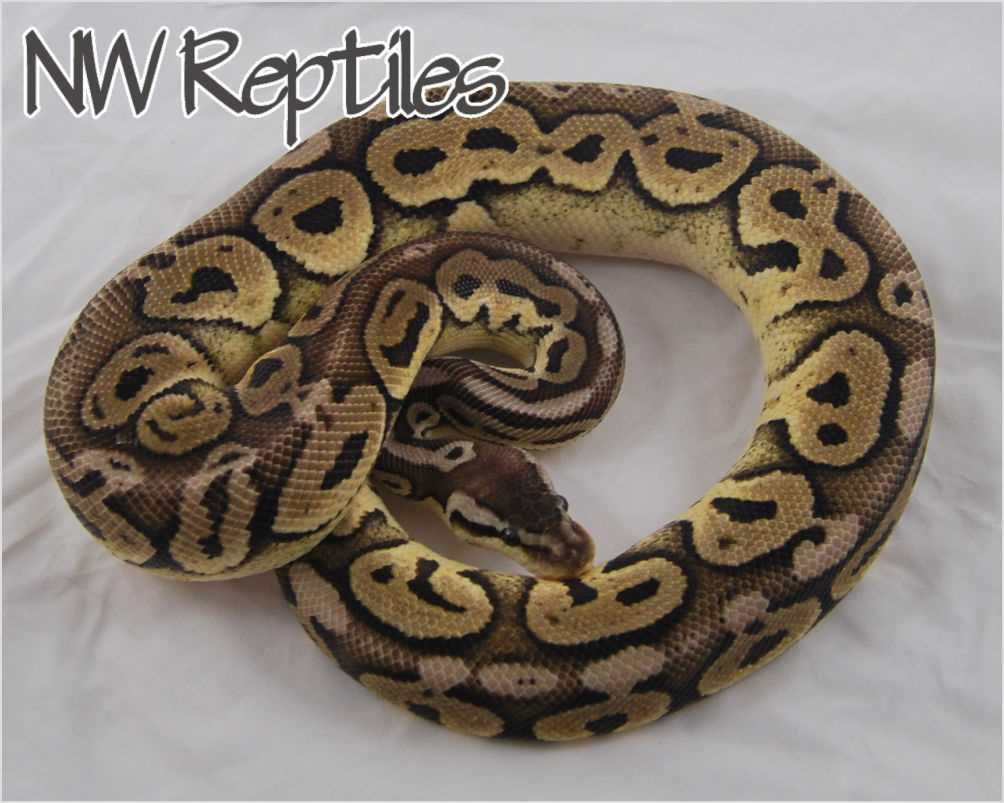The Pewter Ball Python is a stunning breed of python known for its unique metallic coloration. This beautiful snake gets its name from the pewter-like hue of its scales, which range from a dark graphite to a shimmering silver. The contrast between the metallic sheen and the dark scale pattern creates a truly captivating appearance that sets the Pewter Ball Python apart from other ball python morphs.
Part of what makes the Pewter Ball Python so popular among snake enthusiasts is its relatively easy care requirements. Like other ball pythons, Pewters are native to Africa and thrive in controlled environments with temperatures between 80-90 degrees Fahrenheit and a humidity level of around 50-60%. Their small size makes them ideal pets for those who want a snake but don’t have the space for larger python species.
Caring for Pewter Ball Pythons

Pewter ball pythons are a popular reptile breed known for their unique coloration. These snakes are a morph of the ball python, displaying a beautiful metallic pewter color. If you are considering bringing a pewter ball python into your home, it’s essential to understand how to properly care for these captivating creatures.
A terrarium with dimensions of at least 36 inches long, 18 inches wide, and 12 inches tall is recommended to provide sufficient space for your snake to move around comfortably. The enclosure should be escape-proof, as ball pythons are expert escape artists.
Since pewter ball pythons are cold-blooded, it’s crucial to provide them with a temperature gradient within their enclosure. This can be achieved by placing a heat pad or heat lamp at one end of the terrarium, creating a warm basking spot of around 88-92°F. The other end of the enclosure should remain cooler, around 78-82°F, allowing your snake to regulate its body temperature as needed.
Humidity is another essential factor in caring for pewter ball pythons. These snakes require a humidity level of around 50-60%. You can maintain proper humidity by providing a large water bowl for your snake to soak in and regularly misting the enclosure with water.
In addition to a suitable environment, diet plays a crucial role in the health of your pewter ball python. They are carnivorous snakes that primarily feed on rodents. It’s recommended to offer appropriately sized frozen-thawed mice or rats every 1-2 weeks, depending on the size and age of your snake.
Regular handling and socialization are also important for pewter ball pythons to ensure they remain friendly and comfortable around humans. Gently handling your snake for short periods of time can help them become accustomed to human interaction.
Remember to always wash your hands before and after handling your snake to prevent the spread of bacteria. Additionally, providing plenty of hiding spots within the enclosure will help your pewter ball python feel secure and reduce stress.
| Care Guidelines for Pewter Ball Pythons: |
|---|
| Enclosure size: Minimum 36″L x 18″W x 12″H |
| Temperature: Basking spot 88-92°F, cool end 78-82°F |
| Humidity: 50-60% |
| Diet: Frozen-thawed mice or rats every 1-2 weeks |
| Handle gently for short periods and provide hiding spots |
By following these care guidelines, you can provide a comfortable and healthy environment for your pewter ball python, ensuring they thrive in captivity.
Breeding Pewter Ball Pythons

Breeding pewter ball pythons can be a fascinating and rewarding experience for reptile enthusiasts. Pewter ball pythons are a stunning morph of the ball python species, known for their unique scale coloration and metallic sheen.
It’s essential to provide the snakes with a suitable enclosure that includes appropriate temperature and humidity levels. The enclosure should also have hiding spots and a separate breeding area with a suitable nest box.
Monitor the pair closely and observe their behavior. If the male is continuously making tapping or rubbing motions on the female, it’s a good indication that they are ready to breed. The male will then coil around the female and align their bodies for copulation.
After successful copulation, the female pewter ball python will enter a pre-laying shedding phase. She may refuse food and become more inactive during this time. Provide her with a comfortable and secure nesting area where she can lay her eggs. A suitable nest substrate can consist of damp sphagnum moss or vermiculite.
Once the female has laid her eggs, carefully remove them from the nest box and place them in an incubator set at the appropriate temperature and humidity levels. The eggs should be incubated for about 55-60 days, depending on the specific temperature and incubation conditions.
During the incubation period, it’s crucial to regularly monitor the eggs and check for any signs of mold or fungal growth. Maintain the proper humidity levels and ensure that the eggs are not exposed to any extreme temperature fluctuations.
After the incubation period, the eggs will begin to hatch, and you will have a clutch of adorable pewter ball python hatchlings. These hatchlings will have their unique patterns and colors, which make them highly sought after by reptile enthusiasts and breeders alike.
Breeding pewter ball pythons requires knowledge, experience, and patience. It’s essential to provide the snakes with optimal care before, during, and after the breeding process. By following these guidelines, you can successfully breed pewter ball pythons and contribute to the fascinating world of reptile breeding.
Pewter Ball Python Morphs

The Pewter Ball Python is a popular morph among python enthusiasts due to its unique metallic appearance. This morph is known for its striking combination of gray, silver, and black colors, which give it a pewter-like sheen. The Pewter Ball Python’s scales have a glossy look, giving it an elegant and sophisticated appearance.
There are several different morphs that can be derived from the Pewter Ball Python. These morphs are created through selective breeding, where python breeders choose specific traits to create unique and desirable offspring. Here are some of the most common Pewter Ball Python morphs:
- Pewter Pied Ball Python: This morph combines the pewter coloration with a pied pattern, resulting in a snake with large patches of white and gray. The contrast between the pewter and white scales creates a striking appearance that is sure to turn heads.
- Pewter Pastel Ball Python: By breeding a Pewter Ball Python with a Pastel Ball Python, breeders can create a morph that exhibits both the pewter coloration and the vibrant yellow and orange colors of the Pastel morph. This combination creates a mesmerizing snake with a unique blend of colors.
- Pewter Clown Ball Python: The addition of the Clown gene to the Pewter Ball Python results in a morph with intricate patterning and vibrant colors. The clown gene causes a distortion in the snake’s pattern, creating a visually stunning snake with a pewter hue.
These are just a few examples of the morphs that can be created using the Pewter Ball Python. Python enthusiasts and breeders continue to experiment and create new and unique morphs using this beautiful metallic reptile. Whether you are a snake enthusiast or a breeder, the Pewter Ball Python and its various morphs are sure to captivate and fascinate.

I’m Lena Adams—a product of an unconventional upbringing in the African wilderness. My father, a daring explorer of African wildlife, sparked my fascination with reptiles, a passion that intertwined with the tragic loss of my mother during an expedition, leaving an indelible mark on my life. Driven to understand the creatures that captivated my parents, I embarked on my journey, sharing insights about reptiles, frogs, and lizards on my website. Through my explorations and conservation efforts, I honour my family’s legacy while seeking connections—to the creatures, nature, and the mother whose presence I yearn to understand.
